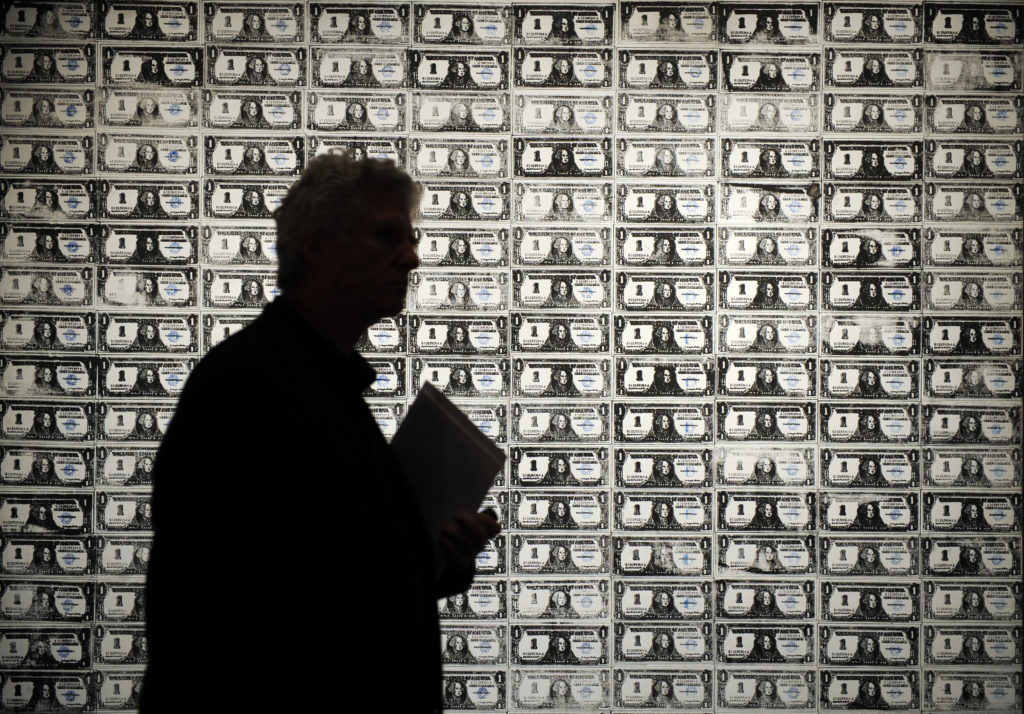Auctions
Who Was the Best-Selling Artist at Auction Worldwide in May? There’s a Clear Winner—by a Long Shot
Perhaps even more surprising than the identity of the artist is the total amount of sales it took to come out on top.

Perhaps even more surprising than the identity of the artist is the total amount of sales it took to come out on top.

Julia Halperin

The past few months have been anything but business as usual in the art market. You know what they say, though: nothing is certain except death, taxes, and the auction success of Andy Warhol.
That’s right: the American Pop icon was the best-selling artist at auction in May 2020, according to the Artnet Price Database. This is all the more notable considering that the marquee New York evening sales, which usually include at least one eight-figure Warhol work, were postponed until mid-summer.
Look a little closer, though, and the numbers reveal that the market for Warhol, like the rest of the art trade, has experienced an extreme drop amid the ongoing shutdown. Last month, Warhol—the best-selling artist at auction—saw a grand total of… $2.9 million in sales.
Allow us to repeat that: the best-selling artist in the world last month sold a grand total of $2.9 million worth of art at auction. To put it in perspective, that sum is 97.5 percent less than Warhol’s work made in May 2019, when it generated $115.5 million.

Andy Warhol’s total auction sales and lots sold by month, 2019–2020. © Artnet Price Database 2020.
Now, you might say to yourself, “Well, with no major auctions, of course total sales of every artist would be down—there just aren’t enough works hitting the block.” But in fact, that assumption is incorrect. In May 2020, a total of 117 works by the fair-haired artist sold, ranging from a dainty 1957 lithograph of a hand holding flowers for $8,400 at Artnet Auctions to a hot-pink serigraph of Marilyn Monroe from 1967, which sold for $82,290 at Gonnelli Casa D’Aste.
It’s true that 40 percent fewer Warhol works came to market last month than in May 2019. But far more dramatic than the drop in quantity is the drop in value. Last May, the average Warhol sold at auction fetched $583,313. Last month, that number dropped to $24,941.
This shift is due in large part to the fact that auction houses are still largely confined to online sales, where sellers have historically been wary to offer works over $1 million (although that is changing fast). Meanwhile, last May saw two major Warhols offered at Christie’s New York evening sale: Liz [Early Colored Liz] (1963), which sold for $19.3 million, and Double Elvis [Ferus Type] (1963), which sold for $53 million.
![Andy Warhol, Double Elvis [Ferus Type] (1963). Courtesy of Christie's Images Ltd.](https://news.artnet.com/app/news-upload/2019/05/double-elvis-new2-660x1024.jpg)
Andy Warhol, Double Elvis [Ferus Type] (1963). Courtesy of Christie’s Images Ltd.
In this case, his less expensive works were popular consignments in a variety of online sales, likely because sellers felt confident that the Warhol brand would continue to resonate with buyers even if they couldn’t see the work in person or felt nervous about paying up for less established names. Similar dynamics likely drove sales of the second best-seller at auction last month: Pablo Picasso, who brought in $2.4 million. (The $1.9 million total of the third-place finisher, George Condo, was driven largely by one pricey Cubist-style portrait that sold in a Sotheby’s online sale for $1.5 million.)
Notably, Warhol was also the best-selling artist at auction in April 2020—total sales, $1.5 million—and the third-best in March, behind Georgia O’Keeffe and Wayne Thiebaud, who managed to eke out hefty sales before the world went on lockdown.
So, if we are considering Warhol’s market as a microcosm for the art market as a whole, one thing is clear: people are transacting right now—but, barring extraordinary circumstances, they aren’t willing to buy or sell at auction anywhere close to pre-shutdown levels.